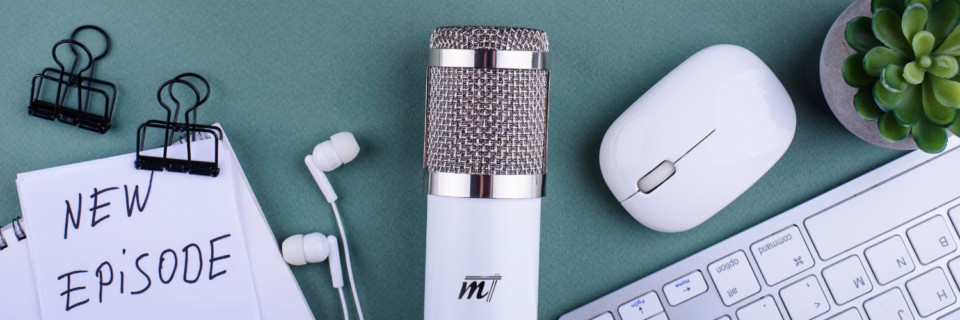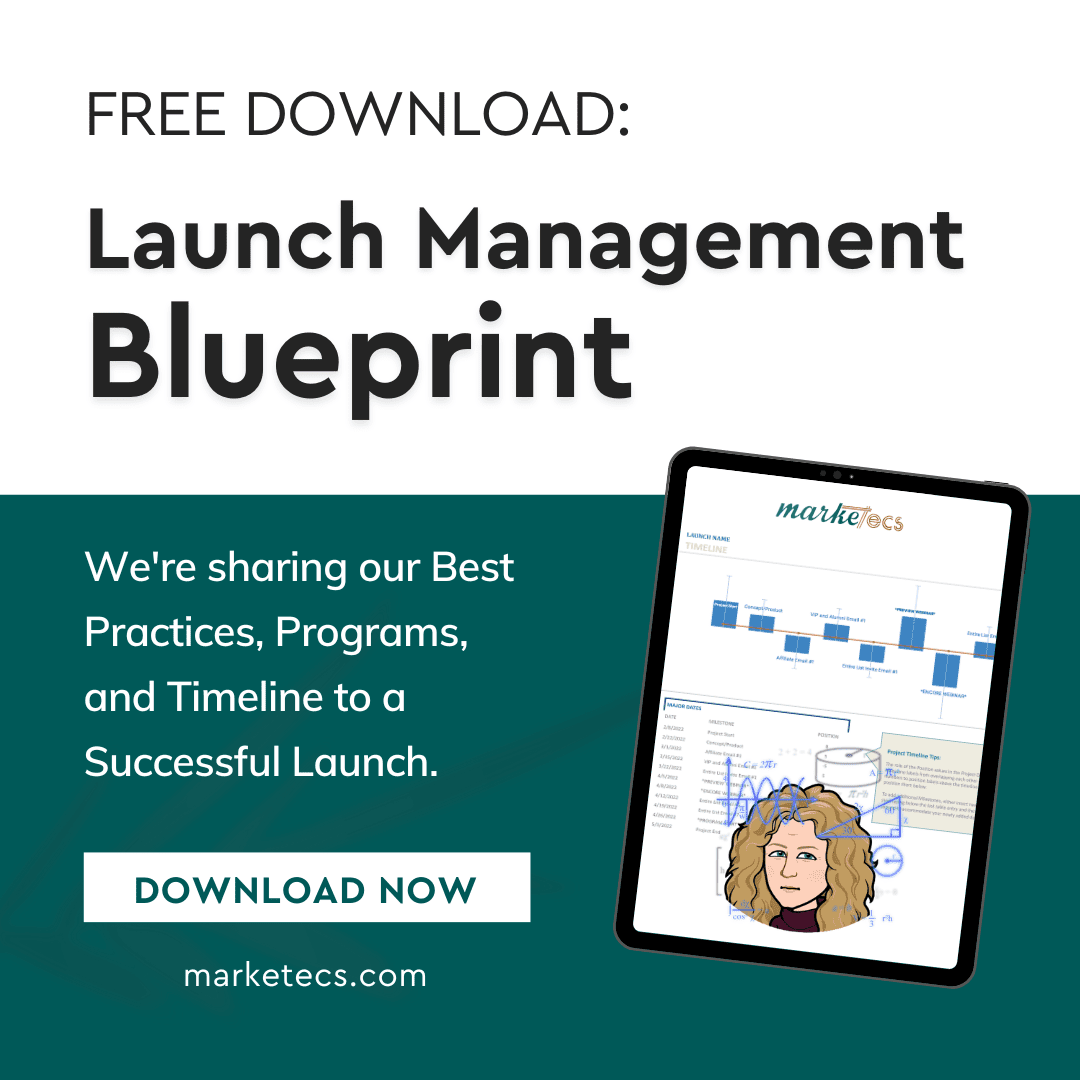So, you’ve launched your podcast… now what?!
Today we’re covering:
- Interesting stats on the state of podcasting
- Podcast production and marketing example 1
- Podcast production and marketing example 2
- 5 proven, practical tips to market your podcast
Psst… In case you missed the first article in this 2-part series, catch up here with a Step-by-Step Guide to Launching Your Podcast.
Master the Art of Podcast Production & Marketing
You’ve put a ton of work into developing your podcast. As we said in a previous post, you don’t want to be a one-hit wonder of the podcast world (or worse, never be heard at all). Instead, it’s time to hit the virtual pavement to successfully take your podcast from production to marketing.
Before we begin, here are some statistics on the state of podcasts that underscore the importance of understanding podcast production and marketing details:
- 7 hrs a week: the time an average listener spends tuned into their favorite podcast app
- Rise ‘n shine: the morning hours = peak listening time
- 20-40 mins: that’s the ideal length for pod episodes to fit with attention span & busy schedules
- Leaders of the pack: Spotify & Apple Podcasts dominate the podcasting world
- 464 MILLION & growing: the # of podcast listeners worldwide
Example #1: What a Real-Life Podcast Marketing Process Looks Like
From the episode broadcast itself (and all the planning) to the process of marketing, that podcast episode takes quite a journey.
Not sure what that looks like in real-life? Let us show you! Step-by-step, here’s an example of an audio-only podcast process we use with one of our own coaching clients:
Podcast Production: 
- File Sharing: the podcast host (our client) saves their show notes, recorded audio file, and any images in Dropbox for easy access.
- Create Episode Images: a Marketecs team member develops episode images and adds them to the Dropbox folder for various uses throughout the production and marketing process.
- Edit Podcast for Audio Distribution: next we edit the MP3 version of the podcast for the distribution service and schedule it, placing any ads as specified by the client. Show notes and a podcast image are included (FYI – distribution services auto-release to all other podcast platforms).
- Ready the Podcast for YouTube: our team edits the MP4 version of the podcast using a still image and a template with the standardized intro/outro for every episode.
- Edit Audiogram Clip: then we edit the MP3 audiogram clip for upload to Waave for social sharing. We use specified details from the show notes.
Podcast Marketing:
- Schedule on YouTube: We schedule the podcast on the client’s YouTube.
- Schedule on WordPress: We schedule podcast episodes as blog posts on the client’s website using the show notes or transcript for content along with embedding the audio or video file. When posting, don’t forget to add the following key data: Title, Description, Permalinks, SEO, Slug, Meta, Excerpt, Author, Custom URL, Featured Image, Tags, and Categories.
- Social Media Scheduling: We schedule the podcast on Facebook and Instagram (and any other social media platforms) using an audiogram created with Waave. Secondary posts can also be created using episode images.
- Email Scheduling: We schedule an email to go out to the client’s list announcing the new episode on a pre-determined date.
And voila, done!
Example #2: A Slightly Different Podcasting Process
Your process might look slightly (or very) different – and that’s perfectly okay. Remember, the podcast production and marketing process will be unique to you and your needs. For example, here’s a quick rundown of the same general process, but for a different executive coaching client we work with:
- File Upload: the client uploads their audio file and episode description to a third-party editing service, where they add the intro/outro.
- Review Description: This is done on the 3rd party platform to make any necessary adjustments.
- Create Episode Image: Same as the first example, we design a new episode image for use in the client’s blog, social media, and newsletter.
- Finalization and Release: Once the client confirms that the episode is finalized, we manually release it to their distribution service, which auto-releases to all other podcast platforms.
- Create Blog Post: We develop a blog from the podcast using the provided description, expanding the copy slightly, and embedding the podcast at the top.
- Share via Newsletter and LinkedIn: We share the blog post via an email newsletter, LinkedIn newsletter, and publish it as an article on LinkedIn.
- Create YouTube Video: We develop a YouTube video for the episode using the client’s video recording, with a standardized intro/outro, and schedule it on the client’s YouTube channel.
- Share on Social Media: When we share on social, we include a link to the blog. If the episode was uploaded to YouTube, we share snippets from that as well.
5 Proven Tips to Market Your Podcast
Whatever your exact process looks like, remember these quick tips to produce and market your podcast like a pro:
- Make your podcast cover art enticing to potential listeners. Include your branding so people make an association with you. Consider investing in professional design services to keep things consistent across all platforms.
- Optimize for SEO to boost your podcast’s visibility in the sea of other podcasts out there. Done right, optimization can help you rank higher in search results and bring in the coveted organic traffic you want. Focus on aspects like: title, description, and episode tags.
- Share on social media to expand your audience. Common platforms include LinkedIn, Facebook, IG & Twitter. Share engaging posts, fun teasers, exclusive behind-the-scenes content, tag guests, etc. Be sure to interact with your listeners, too!
- List your podcast on popular directories. Examples include Apple Podcasts, Spotify, Google Podcasts, and Stitcher. Again, you should focus on optimizing your podcast with relevant descriptions and appealing cover art to attract potential listeners.
- Team up with influencers and guests to expand your own influence. Successful collaboration helps you access their existing audience and widen your potential reach. Plus, you can offer fresh perspectives and helpful insights to your listeners.
Whew, that was a lot! It may seem overwhelming to consider all that goes into even a single podcast episode.
The good news? There is absolutely no need to go it alone! If you could use a little expertise – or a lot of help – we are here for you. Oh, and we don’t oversell: our focus is over-serving. Schedule a call today.


